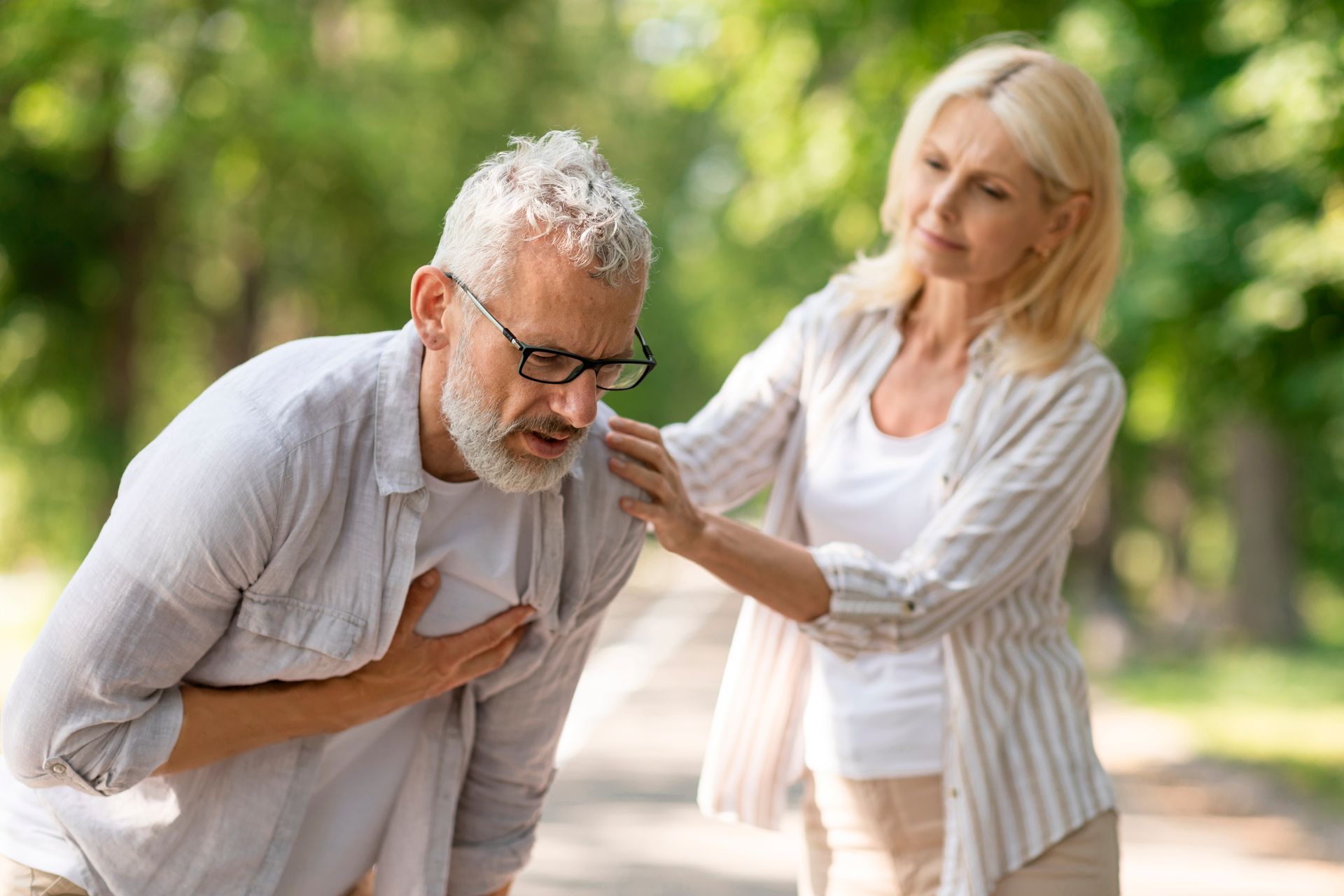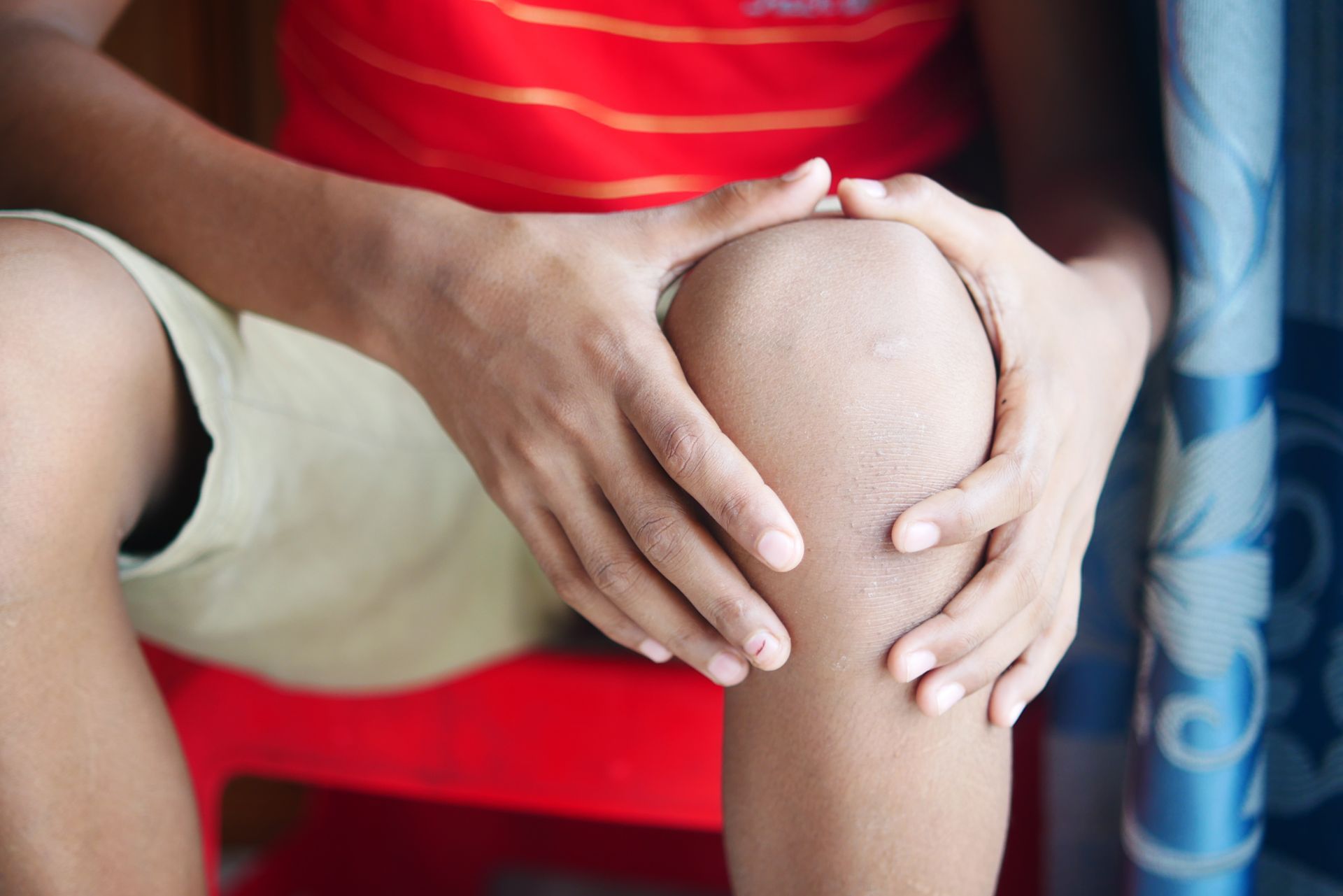BLOG, PODCAST, & RESEARCH LIBRARY
Orthopedic injuries, ranging from minor sprains to severe fractures, can significantly impact one's quality of life. Traditional treatments often involve invasive surgeries...

Orthopedic injuries, ranging from minor sprains to severe fractures, can significantly impact one's quality of life. Traditional treatments often involve invasive surgeries, prolonged recovery periods, and sometimes, incomplete healing. However, the advent of stem cell therapies offers a promising alternative that harnesses the body's natural healing capabilities. As a natural and alternative health practitioner, I am excited to share the potential of stem cell therapies in revolutionizing the treatment of orthopedic injuries.
Understanding Stem Cells
Stem cells are unique cells with the remarkable ability to develop into various specialized cell types, such as bone, muscle, or cartilage. This versatility makes them invaluable in regenerative medicine, where they can be used to repair or replace damaged tissues. Stem cells can be harvested from different sources, including bone marrow, adipose (fat) tissue, and umbilical cord blood.
Types of Stem Cells
1. Embryonic Stem Cells (ESCs):
Derived from early-stage embryos, these cells can differentiate into any cell type in the body. However, their use is controversial due to ethical concerns.
2. Adult Stem Cells:
Found in various tissues, these cells are more specialized than ESCs but still possess significant regenerative potential. Mesenchymal stem cells (MSCs), a type of adult stem cell, are commonly used in orthopedic treatments.
3. Induced Pluripotent Stem Cells (iPSCs):
These are adult cells reprogrammed to an embryonic-like state, capable of differentiating into any cell type. iPSCs offer a promising alternative to ESCs without the associated ethical issues.
The Science Behind Stem Cell Therapy
Stem cell therapy involves harvesting stem cells from the patient or a donor, processing them, and injecting them into the injured area. Once administered, these cells can differentiate into the required cell types, promoting tissue repair and regeneration. Additionally, stem cells release growth factors and cytokines that reduce inflammation and stimulate the body's natural healing processes.
Mechanisms of Action
4. Cell Differentiation:
Stem cells can transform into the specific cell types needed to repair damaged tissues.
5. Paracrine Signaling:
Stem cells secrete bioactive molecules that modulate the local environment, promoting healing and reducing inflammation.
6. Immune Modulation:
Stem cells can modulate the immune response, reducing inflammation and preventing further tissue damage.
Applications in Orthopedic Injuries
Stem cell therapies have shown promise in treating various orthopedic conditions, including:
Osteoarthritis
Osteoarthritis (OA)
is a degenerative joint disease characterized by the breakdown of cartilage. Traditional treatments focus on symptom management, but stem cell therapy offers a potential cure by regenerating damaged cartilage. Studies have shown that MSCs can differentiate into chondrocytes (cartilage cells) and produce extracellular matrix components, leading to improved joint function and reduced pain (Ng et al., 2020).
Tendon and Ligament Injuries
Tendon and ligament injuries, such as rotator cuff tears and anterior cruciate ligament (ACL) injuries, are common in athletes and active individuals. Stem cell therapy can accelerate the healing process by promoting the regeneration of tendon and ligament tissues. Research has demonstrated that MSCs can differentiate into tenocytes (tendon cells) and fibroblasts (ligament cells), enhancing tissue repair and reducing recovery time (Furia et al., 2022).
Bone Fractures
Bone fractures, especially those that are complex or slow to heal, can benefit from stem cell therapy. MSCs can differentiate into osteoblasts (bone cells) and promote bone formation. Studies have shown that stem cell therapy can enhance fracture healing, reduce the risk of non-union, and improve overall bone strength (Iaquinta et al., 2019).
Cartilage Defects
Cartilage defects, often resulting from trauma or degenerative diseases, can lead to joint pain and dysfunction. Stem cell therapy can regenerate damaged cartilage, restoring joint function and reducing pain. Research has shown that MSCs can produce cartilage matrix components and integrate into the existing cartilage, promoting long-term joint health (Chan et al., 2020).
Clinical Evidence and Success Stories
Numerous clinical trials and studies have demonstrated the efficacy of stem cell therapies in treating orthopedic injuries. For instance, a study published in the Journal of Orthopaedic Surgery and Research reported significant improvements in pain and function in patients with knee osteoarthritis treated with MSCs (Gupta et al., 2016). Another study found that stem cell therapy effectively treated rotator cuff injuries, with patients experiencing faster recovery and improved shoulder function (Condron et al., 2021).
Real-Life Success Stories
7. Osteoarthritis:
Patients with severe knee osteoarthritis who underwent stem cell therapy reported significant pain relief and improved mobility. Some patients even avoided knee replacement surgery, highlighting the potential of stem cell therapy as a non-invasive alternative (Mayo Clinic, 2024).
8. Tendon Injuries:
Athletes with chronic tendon injuries experienced faster recovery and returned to their sports sooner after receiving stem cell therapy. The regenerative potential of stem cells helped repair damaged tendons and restore function (Sazdanoff Chiropractic, 2024).
9. Bone Fractures:
Patients with complex fractures that were slow to heal showed remarkable improvement after stem cell therapy. The treatment accelerated bone healing, reduced the risk of non-union, and improved overall bone strength (Stanford Health Care, 2024).
Advantages of Stem Cell Therapy
Stem cell therapy offers several advantages over traditional treatments for orthopedic injuries:
10. Minimally Invasive:
Stem cell therapy involves minimally invasive procedures, reducing the risk of complications and shortening recovery times.
11. Natural Healing:
By harnessing the body's natural healing capabilities, stem cell therapy promotes tissue regeneration and repair without the need for synthetic materials or implants.
12. Reduced Pain and Inflammation:
Stem cells release bioactive molecules that reduce inflammation and alleviate pain, improving the patient's quality of life.
13. Potential to Avoid Surgery:
For some patients, stem cell therapy can eliminate the need for invasive surgeries, such as joint replacements, by promoting natural tissue regeneration.
Challenges and Future Directions
While stem cell therapy holds great promise, several challenges must be addressed to optimize its efficacy and safety:
14. Standardization:
There is a need for standardized protocols for harvesting, processing, and administering stem cells to ensure consistent and reliable outcomes.
15. Long-Term Safety:
Long-term studies are required to assess the safety and efficacy of stem cell therapies, particularly regarding potential risks such as tumor formation or immune reactions.
16. Regulatory Approval:
Regulatory agencies must establish clear guidelines for the use of stem cell therapies to ensure patient safety and promote ethical practices.
Future Research
Ongoing research aims to address these challenges and expand the applications of stem cell therapy in orthopedics. Some promising areas of investigation include:
17. Gene Editing:
Techniques such as CRISPR-Cas9 can be used to enhance the regenerative potential of stem cells and improve their safety profile.
18. Biomaterials and Scaffolds:
Advanced biomaterials and scaffolds can provide structural support and enhance the integration of stem cells into the damaged tissues.
19. Combination Therapies:
Combining stem cell therapy with other treatments, such as growth factors or physical therapy, can enhance the overall efficacy and promote faster recovery.
Conclusion
Stem cell therapy represents a groundbreaking advancement in the treatment of orthopedic injuries. By harnessing the body's natural healing capabilities, stem cell therapy offers a minimally invasive, effective, and promising alternative to traditional treatments. As research continues to advance, stem cell therapies are poised to revolutionize the field of orthopedics, providing hope and healing to countless individuals suffering from musculoskeletal injuries and degenerative conditions.
With continued research and clinical advancements, stem cell therapy holds the potential to transform the landscape of orthopedic care and improve the quality of life for many patients.
References:
• Ng et al., 2020
https://academic.oup.com/stmcls/article/38/4/477/6409595
• Furia et al., 2022
https://josr-online.biomedcentral.com/articles/10.1186/s13018-022-02918-8
• Iaquinta et al., 2019
https://www.ncbi.nlm.nih.gov/pmc/articles/PMC6863062/
• Chan et al., 2020
https://med.stanford.edu/news/all-news/2020/08/Researchers-find-method-to-regrow-cartilage-in-the-joints.html
• Gupta et al., 2016
https://josr-online.biomedcentral.com/articles/10.1186/s13018-022-02918-8
• Condron et al., 2021
https://josr-online.biomedcentral.com/articles/10.1186/s13018-022-02918-8
• Mayo Clinic, 2024
https://www.mayoclinic.org/medical-professionals/orthopedic-surgery/news/navigating-the-hope-and-hype-of-regenerative-medicine/mac-20482553
• Sazdanoff Chiropractic, 2024
https://www.sazdanoffchiropractic.com/post/joint-health-the-rise-of-stem-cell-therapy-as-an-alternative-to-joint-replacement-surgery
• Stanford Health Care, 2024
https://med.stanford.edu/news/all-news/2020/08/Researchers-find-method-to-regrow-cartilage-in-the-joints.html

"Even more impressive, pectin has been linked with a variety of health benefits, including its ability to support detoxification processes, serve as a prebiotic, and assist in managing certain metabolic disorders. Its significance in maintaining overall digestive health while offering protective mechanisms against various diseases highlights the importance of incorporating pectin-rich foods into your diet..."

"These powerful substances are now more accessible than ever, featured in various health products aimed at detoxification and nutrient optimization. When selecting a product, ensure it's sourced from high-quality, organic materials and processed to preserve the integrity of the humic and fulvic compounds."

Introduction Nausea and vomiting are unpleasant symptoms that can arise from various causes, including motion sickness, morning sickness, infections, and more. While conventional medications can be effective, natural remedies offer a gentle and holistic approach to alleviating these discomforts. Here, we explore several natural methods to help stop nausea and vomiting, providing relief without relying on pharmaceuticals. 1. Ginger Ginger is one of the most well-known natural remedies for nausea and vomiting. It contains compounds like gingerol and shogaol that have anti-nausea properties. • How to Use: Fresh ginger can be grated and steeped in hot water to make ginger tea. Ginger candies, capsules, or even fresh ginger slices can also be effective. Sipping ginger tea or chewing on ginger candies can help soothe the stomach. 2. Peppermint Peppermint is another popular remedy known for its calming effects on the stomach muscles, which can help relieve nausea. • How to Use: Peppermint tea, made by steeping fresh or dried peppermint leaves in hot water, can provide quick relief. Peppermint essential oil can also be inhaled or diluted with a carrier oil and applied to the wrists or behind the ears. 3. Lemon The refreshing scent and taste of lemon can help reduce nausea. Lemons are also rich in vitamin C, which can boost your immune system. • How to Use: Drinking lemon water, inhaling the scent of fresh lemons, or sucking on lemon slices can help. Lemon essential oil can also be diffused or used in aromatherapy. 4. Acupressure Acupressure is an ancient technique that involves applying pressure to specific points on the body to relieve symptoms. • How to Use: The P6 (Neiguan) point, located on the inner wrist, is known to alleviate nausea. To find this point, measure three finger-widths down from the base of your palm and apply gentle pressure with your thumb for a few minutes. 5. Hydration Staying hydrated is crucial, especially if you have been vomiting. Dehydration can worsen nausea and overall discomfort. • How to Use: Sip on clear fluids like water, herbal teas, or electrolyte solutions. Avoid sugary or caffeinated beverages, as they can irritate the stomach. 6. Chamomile Tea Chamomile tea is known for its soothing and anti-inflammatory properties, which can help calm the stomach and reduce nausea. • How to Use: Steep chamomile flowers in hot water for several minutes to make a calming tea. Sip slowly to ease nausea and promote relaxation. 7. Fennel Seeds Fennel seeds have been traditionally used to treat digestive issues, including nausea and bloating. • How to Use: Chew on a teaspoon of fennel seeds or make fennel tea by steeping the seeds in hot water. Drinking fennel tea can help settle the stomach and reduce nausea. 8. Apple Cider Vinegar Apple cider vinegar can help balance stomach acids and improve digestion, which can reduce nausea. • How to Use: Mix one tablespoon of apple cider vinegar with a cup of warm water and a teaspoon of honey. Drink this mixture slowly to alleviate nausea. 9. Bland Diet Eating bland foods can help settle the stomach and prevent further irritation. • How to Use: The BRAT diet (bananas, rice, applesauce, toast) is a commonly recommended regimen for those experiencing nausea. These foods are easy to digest and can help absorb excess stomach acid. 10. Essential Oils Essential oils like lavender, ginger, and peppermint can provide relief through aromatherapy. • How to Use: Diffuse essential oils in your home, inhale directly from the bottle, or apply diluted oils to your skin. Aromatherapy can help relax the mind and body, reducing the sensation of nausea. Conclusion Natural remedies offer a gentle and effective way to manage nausea and vomiting. From herbal teas and essential oils to acupressure and hydration, these methods can provide relief without the need for pharmaceuticals.







